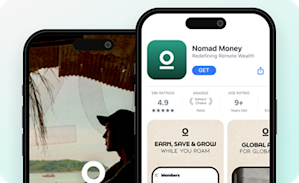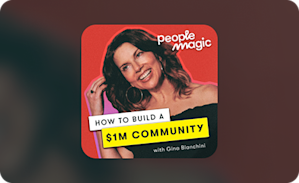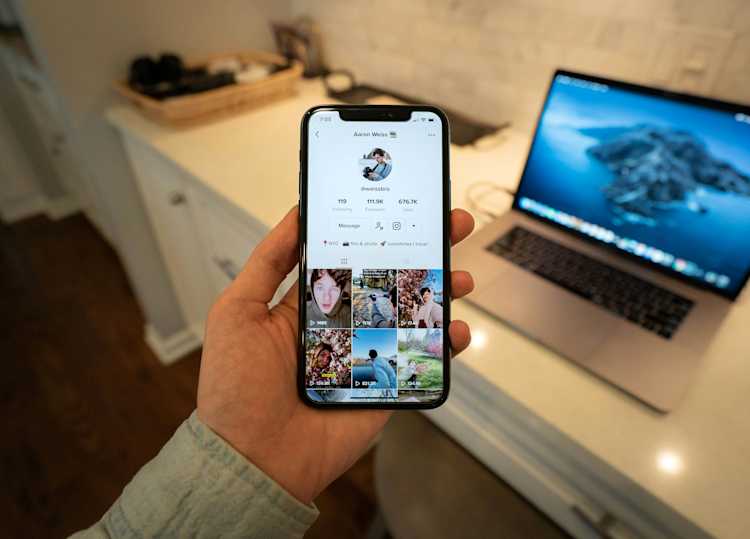Creators & Entrepreneurs
10 Video Monetization Platforms (+ How to Monetize)
Earning money from your videos is the dream. Here’s how it works.
Author
Mighty Team
Last Updated
September 19, 2025

For creators building great videos, there’s a word that everyone knows: monetization. Earning money from your videos is the dream. But there are a lot of misconceptions about how monetization actually works. And often, the “popular opinions” about monetization are just plain wrong.
That’s why so many creators are spinning their wheels, struggling to monetize their videos.
That’s where this article comes in. We’ll take a real, hard look at some video monetization models. And we’ll share the platforms that are actually worth building on!
This article will:
Explain what video monetization is and how it works.
Share the different monetization models for different creators.
List 10 Video monetization platforms for every type of video creator.
Try the best video monetization platform free for 14 days
What is video monetization?
Video monetization is the process of generating revenue from video content. Since video content is often either educational or entertainment, most video monetization either charges viewers to see content or charges advertisers to reach viewers–although we’ll get into more possibilities below.
Video monetization works a lot like any other form of content monetization. People who create, cultivate, or own content can earn money because people want to see it. For this reason, we’ll cover three types of video monetization platform:
Social media platforms that work well for videos.
Dedicated video platforms for subscriptions.
Membership and course platforms that work great for video.
What is a video monetization platform?
A video monetization platform is software for earning from your video content–primarily through gating access to paid subscribers. A good video monetization platform needs a payment processor and some way to control access. This could include memberships, recurring, or one-time payments. It should also give you options to customize a video library and deliver vids in a way your members love.
Must-have features of the best video monetization platforms
Monetization: Software to collect payments in different ways, build plans, and control access.
Content hosting: Most often video libraries or course-style layouts (e.g. LMS). Many video creators also want to share posts, messaging, articles, and other forms of content.
Member lists: For video memberships and communities, having member profiles and lists are a must so people can meet each other. Back-end member-management tools are also great to have.
Events & livestreaming: Adding virtual events and streams to a video membership is an awesome way to engage your community.
AI & automation: Top platforms include AI automations for creating content and helping members to engage. And bonus points for using AI in creative ways.
Gamification: Tools to gamify, things like leaderboards, awards, and unlocks, can seriously boost engagement and retention.
Security & privacy: Obviously you want safe data practices, moderation tools to keep members safe, and secure log-ons and checkouts.
How video monetization works
There are so many different video monetization models (we’ll cover them below), but most of them have one thing in common: you build an audience and then monetize the attention. It’s a staple of the creator economy, and it’s the principle behind most video monetization.
But monetizing viewers’ attention can be done in different ways. Finding the right monetization strategy usually means:
Considering the size of your audience.
Picking your niche and what you need to serve it.
Understanding what your viewers want and how products, services, memberships, etc. may fit into their unique journeys and goals.
For example, monetizing with ads on YouTube videos means you can reach a broader audience, but you’ll earn less per view. Videos hosted on a paid membership site will earn much more per member, but you’ll lose the mass appeal of YouTube.
Neither approach is right or wrong. It depends on your goals and your audience.
Choosing the right video monetization strategy requires some planning. But the great news is that these aren’t all mutually exclusive. AND you can try different things and find what works for you!
Video monetization models
When you look at how video monetization works, you’ll often see three terms:
Advertising-Based Video on Demand (AVOD): The content is free (or less expensive) to viewers and the revenue generated comes from advertising. In this case, a corporate ad partner pays to reach viewers.
Subscription-Based Video on Demand (SVOD): Viewers pay for content access, usually with a recurring subscription fee. This is familiar from popular streaming programs like Netflix and Disney+.
Transactional Video on Demand (TVOD): Viewers pay for content as they want to access it, for example, a video course, webinar, or pay-per view TV event.
These are industry terms that are useful to know. But there are very few brands or people monetizing videos in a way that fits perfectly in these categories. Instead, monetization usually requires a mix of these and some other approaches.
So it’s really more helpful to break down and explain different video monetization models conceptually instead.
Advertising
When we think of video monetization, we usually think advertising. This sort of makes sense. According to Statista, $176 billion was spent on digital video advertising last year. And our studies show that it’s still one of the most common ways creators try to monetize (although not necessarily the best).
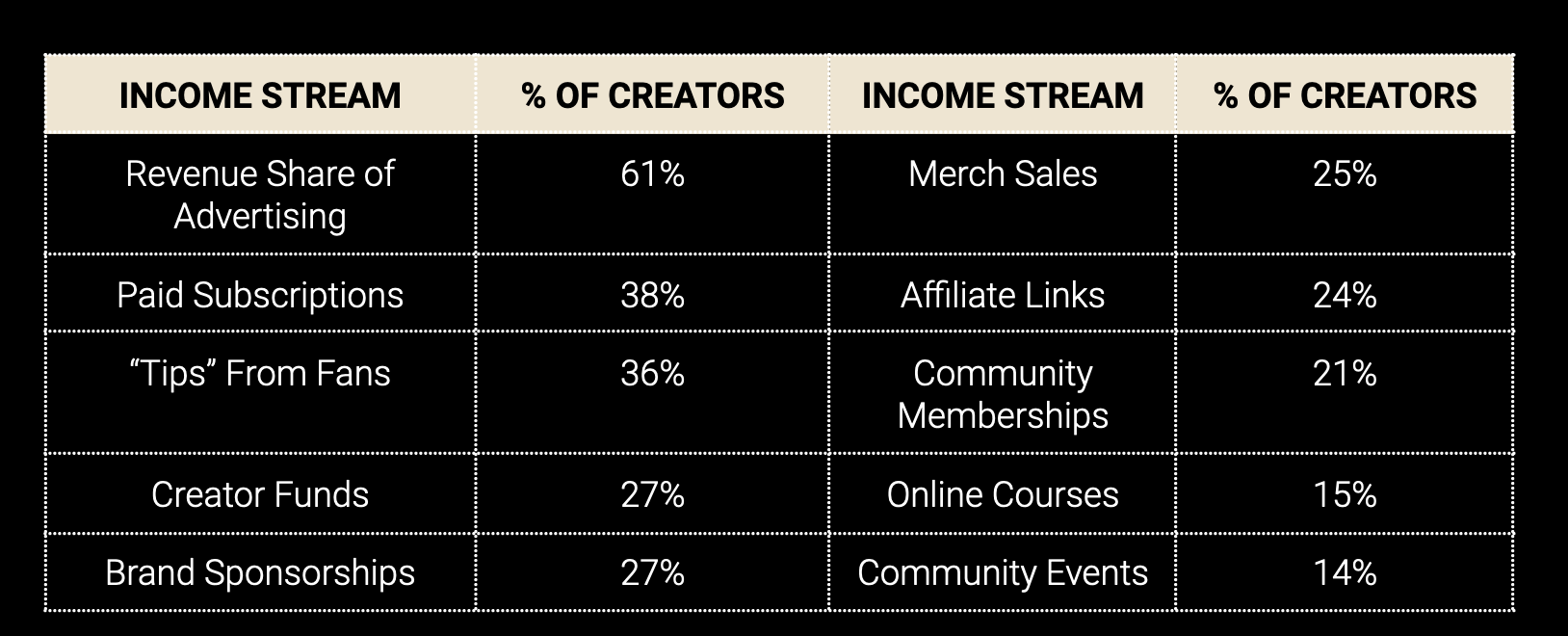
Most people trying to understand video monetization and ads think YouTube–after all, YouTube made $31 billion in ad revenue last year.
YouTube is the giant, and we’ll talk about it below, but you can monetize with ads on other social media platforms too:
Meta has a similar model to YouTube for monetizing videos on Instagram and Facebook with in-stream ads. It’s technically a bigger ad market than YouTube, but isn’t as well-known.
TikTok has no direct ad-revenue program, but you can earn through the TikTok creator fund.
Twitch has a display ads program that lets creators monetize during their stream–it’s a cool approach since ads don’t have to interrupt a stream.
Ad platforms
One other way of monetizing with video ads is with direct in-video display ads with hosted video. For example, bloggers who monetize with Mediavine can upload videos to the Mediavine dashboard and repost them in an article–and they will include Mediavine monetization. Or, you can have ads embedded on the video pages of a website.
There are a ton of different ways to get ads in front of viewers, and lots of companies dedicated to helping you do it.
Subscription video
Subscription video is huge, and will be worth $137 billion by 2027. However, most of this revenue goes to big streaming companies, with Netflix alone boasting some 260 million subscribers and $33 billion in revenue. Subscription video is more difficult for smaller creators, although there are platforms that allow for it. We’ll cover these below.
Memberships
Memberships are similar to subscriptions, but usually a membership isn’t limited to video content alone. Video content might be one perk of a membership. Membership platforms hold a lot of the world’s video. Although videos in membership sites are paywall protected–not open to the world in the same way a YouTube video is–by cultivating an audience creators often earn much more.
For example, memberships can include video libraries, podcasts, webinars, livestreams, and even pre-recorded courses, all of which are monetized video. This means that running a membership on a video-supporting platform is often a more lucrative way of earning more from fewer subscribers. The average membership fee on a Mighty Network is $48 in monthly, recurring revenue.
Courses
Online video creators who have an audience can monetize their following through teaching what they know in the form of online courses–either asynchronous or synchronous.
For example, the YouTuber Ali Abdaal created the part-time YouTuber academy to teach people to build and monetize a YouTube channel. He earns from the sale of these courses.
Sponsorships & Brand deals
Once video creators have enough of a following, they often look for sponsorships and brand deals. In this model, the creator negotiates a payment for creating video content on behalf of a brand. Payments can range from a few dollars to millions for those with large audiences–for example, Cristiano Ronaldo makes over $3 million per post.
Negotiating a brand deal can be done 1:1 between a brand and creator, but there are lots of platforms that help creators and brands find each other; these offer services from matching to negotiation to content assistance. Marketplaces like CreatorIQ, Aspire, and IZEA were created for this.
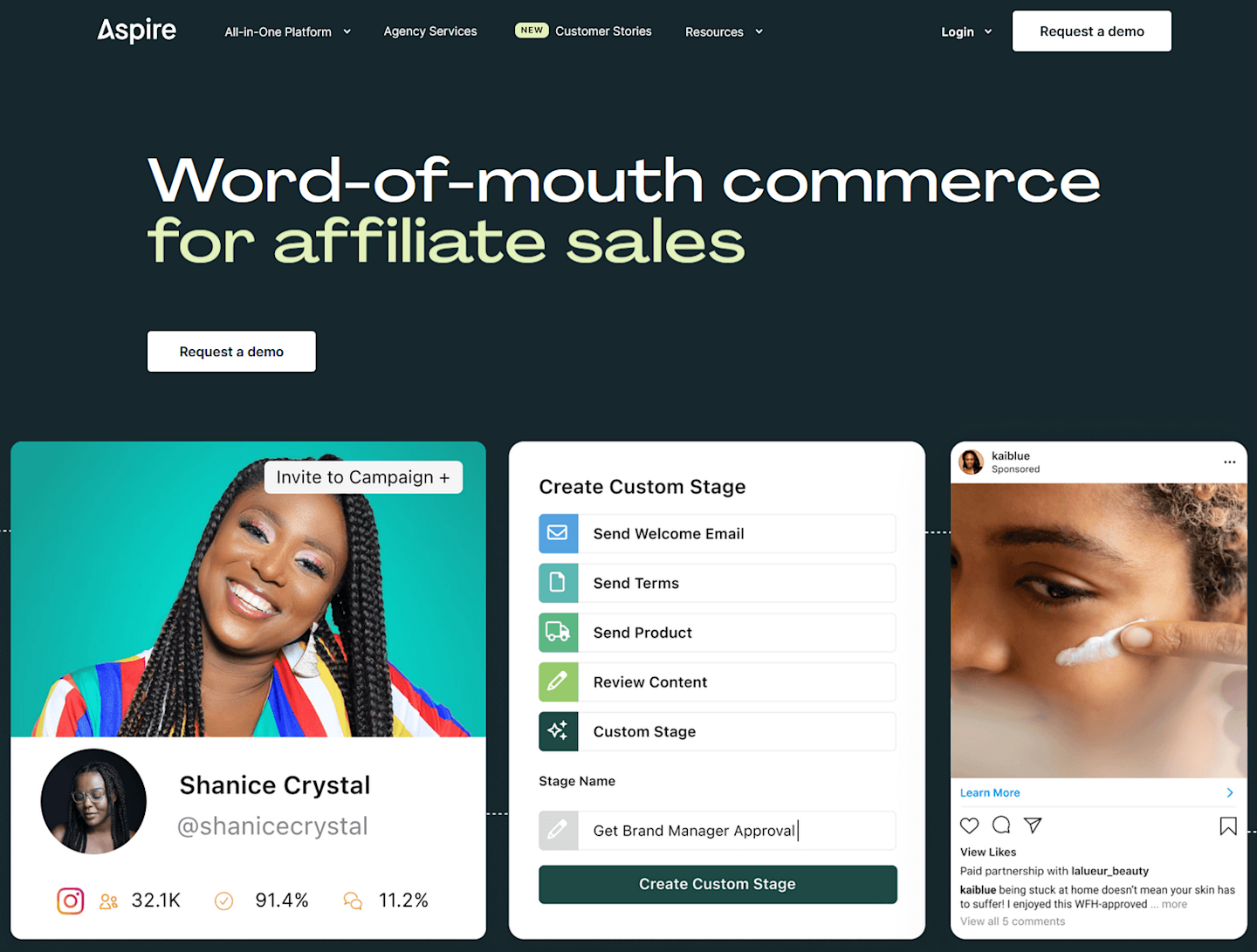
Affiliates
Affiliates are slightly different from brand deals. With affiliates, you can promote a brand’s products and earn a commission for each sale. For example, a YouTuber who talks about personal finance might encourage their followers to try a personal finance app–earning from each one who pays for a premium version.
Affiliates have set payouts depending on the program. Usually, you get a unique tracking link to share with viewers that tracks the clicks and sales you generate. Unlike sponsorships, which are usually paid in advance, affiliates are paid based on an action by followers–usually a sale or a click.
Many video creators share affiliate links in video descriptions. For example, if you see links to products on Amazon in a YouTube video, these are normally affiliate links. Most affiliate programs also require you to disclose to your audience if you’re making a commission on a sale.
Like sponsorships, there are marketplaces to help you find affiliates. For example, both Impact Radius and Rakuten host thousands of products you can sell.
Patronage
In a patronage model, people can pay to support your work. This often means an ongoing payment, providing video creators with regular, monthly income. Patronage is pretty well known thanks to the rise of the platform Patreon.
Revenue share
When platforms share some of their revenue with video creators, that’s revenue share. The best known example of this was TikTok’s Creator Fund. But this program is currently suspended.
Merchandising
Merchandising means you create merchandise from a following. For example, if you created tshirts or an inspiration journal under your brand, that’s merchandising. Thanks to social commerce, it’s getting easier to sell merch on social media platforms. For example, you can add a merch page to YouTube and sell items. Dropshipping merch is pretty simple too–a service like Printify can create and ship your merch without you even being involved.
Business generation
This isn’t totally different from merchandising, but it’s also possible to create and buy businesses from a video following. We’ve seen versions of this from major social celebrities, like Kylie Jenner creating a cosmetic company (Kylie Cosmetics).
Another model of this is when influencers invest and partner with existing businesses, creating a flywheel of portfolio companies they can promote: Alex Hormozi and Cody Sanchez both do this. In this case, video creation can work to attract cool founders and companies to your brand, and you can partner and work as a sort of “kingmaker” to promote them.
Other forms
When you use videos to create attention or a following, there are still other forms of monetization you could consider. If your YouTube videos establish you as an expert, you could charge for consulting or 1:1 coaching. Or, maybe you land a book deal and write a bestseller like John Green, author of The Fault in Our Stars, did from his YouTube channel.
Don’t be limited by the options here. Be creative!
Video Monetization Platforms
1. Mighty Networks
Best video monetization platform for memberships
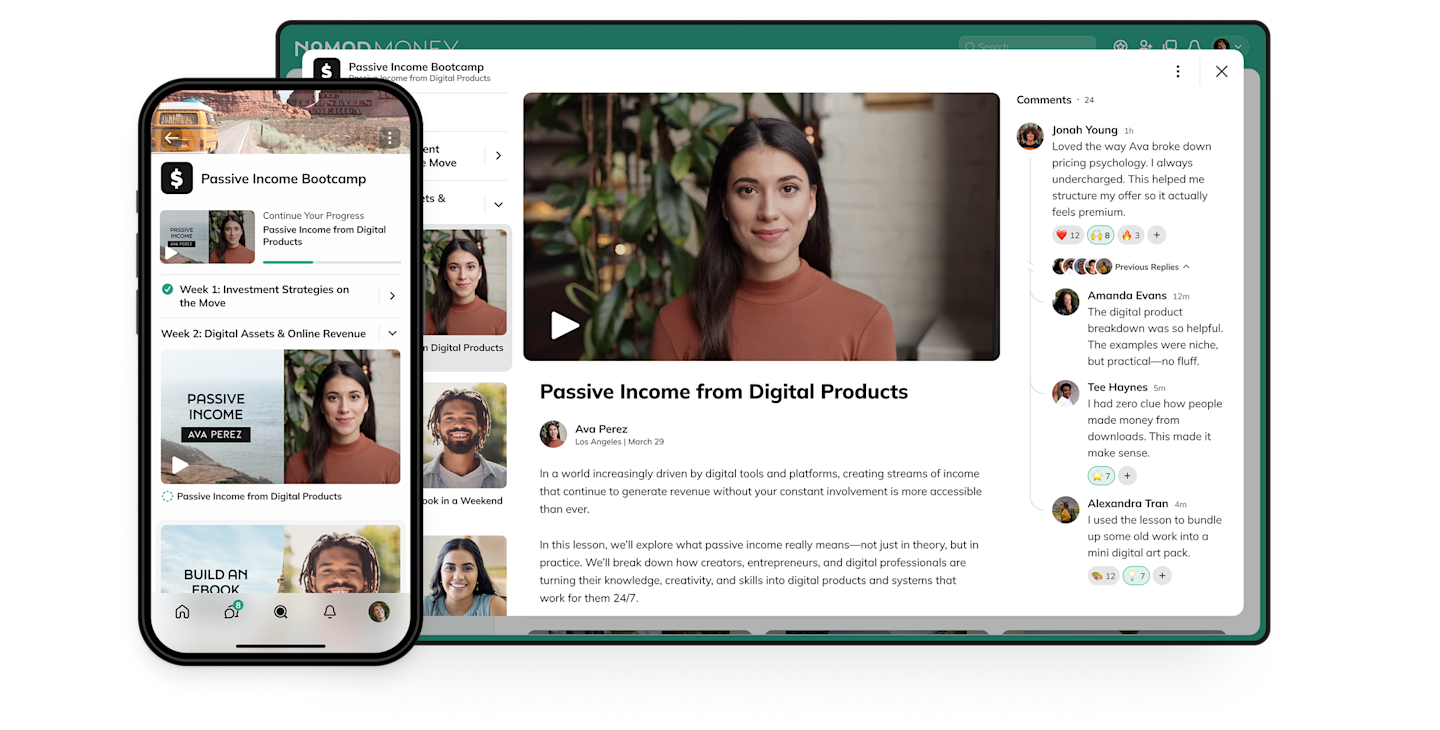
Mighty Networks is a video monetization platform for a digital content business run on G2’s top-rated community platforms.
As the software with more $1 million communities than any other, Mighty can be used for memberships, paid livestreams and webinars, virtual events, plus gating individual or groups of videos.
Mighty is the brand behind a lot of top creators’ monetized video content, people and brands like Tony Robbins, Marie Forleo, Mel Robbins, TED, Matthew Hussey, Jim Kwik, BODi, and Keap.
A Mighty Network is made up of Spaces–these are containers you can use to build and monetize any content you want. Each Space can be individually gated or bundled with others. You can pick from pre-made templates, or choose from different features like: chat, livestreaming, discovery feeds, a Table of Contents (for a video course), a page, or a single event.
This gives you the engine to monetize any kind of videos you want–from livestreams to courses to video libraries–in 135 different currencies.
For memberships, Mighty is a membership engagement platform with built in engagement features you won’t find anywhere else. It’s software designed to create people magic, introducing members to each other and helping them make friends.
You can create your own “network effect” (the same principle that’s behind major social media companies’ growth), as members connect and create their own content, your brand grows faster. And tools like customizable member checklists and the dynamic people explorer make this easier than ever.
And Mighty integrates AI engagement tools to help your members instantly create profiles, show what you have in common with others, and even start conversations.
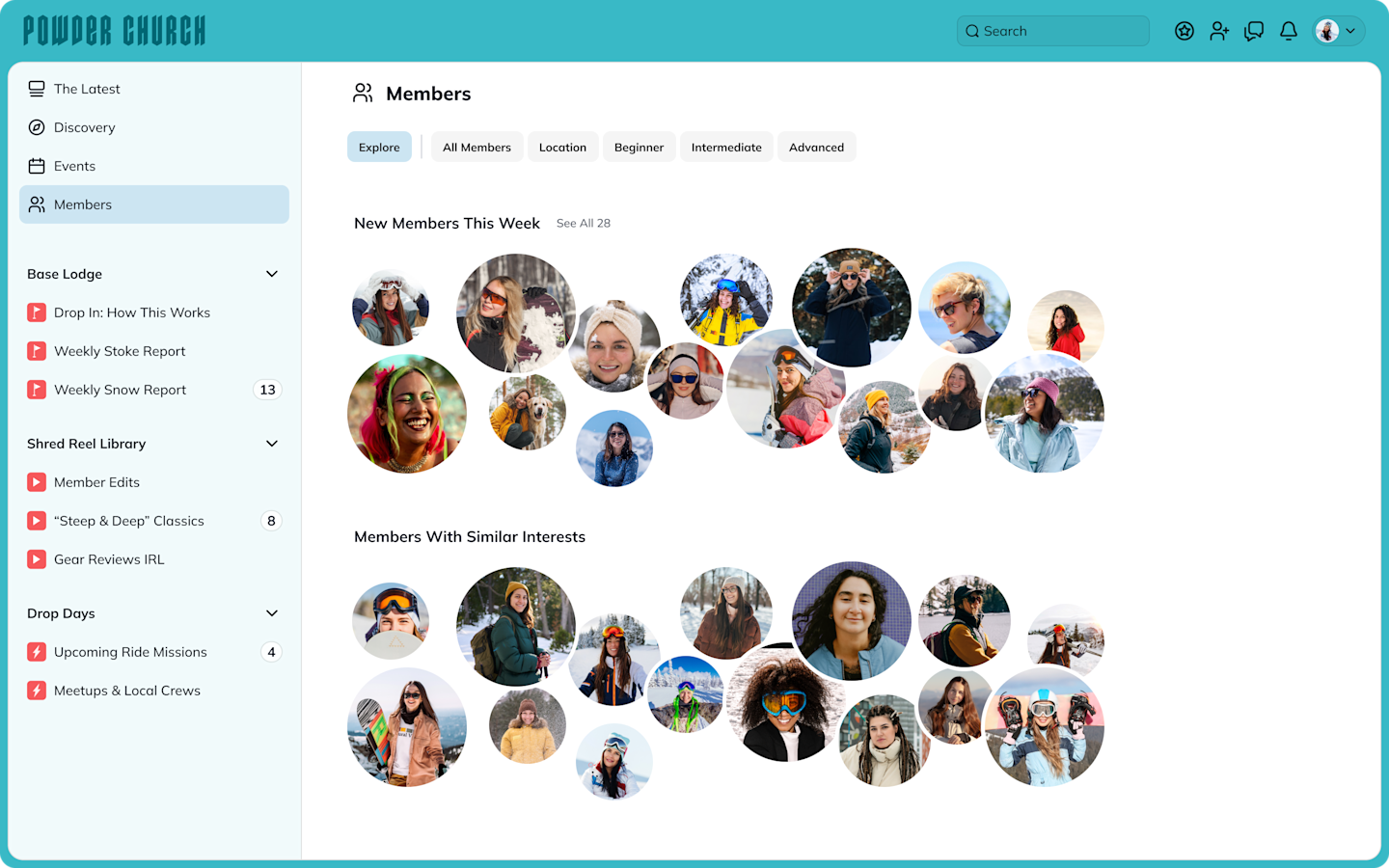
Mighty comes with a great app for every device. Or, more established creators can even get branded apps–read more about that here.
You can try Mighty Networks free for 14 days–no credit card required.
How to monetize video with Mighty Networks
Memberships (inc. video libraries)
Paid livestreams
Courses
2. Youtube
Best video monetization platform for ads
With a daily view count of 1 billion hours, YouTube has been the master of long-form video for a while now, but the “Shorts” part of their business is also growing–with 2 billion users a month and 50 billion daily views. YouTube is also cool because it’s a search engine. If you have good content, searchers can find it for years to come.
YouTube is also still bigger than TikTok, although it’s gaining fast. But YouTube is still a better video monetization platform for monetizing with ads, since it has a built-in ad engine (TikTok doesn’t).
YouTube’s ads are run through the Google Adsense program–you can apply to join once you have 1,000 subs AND either 4,000 hours of watch time or 10 million Shorts views.
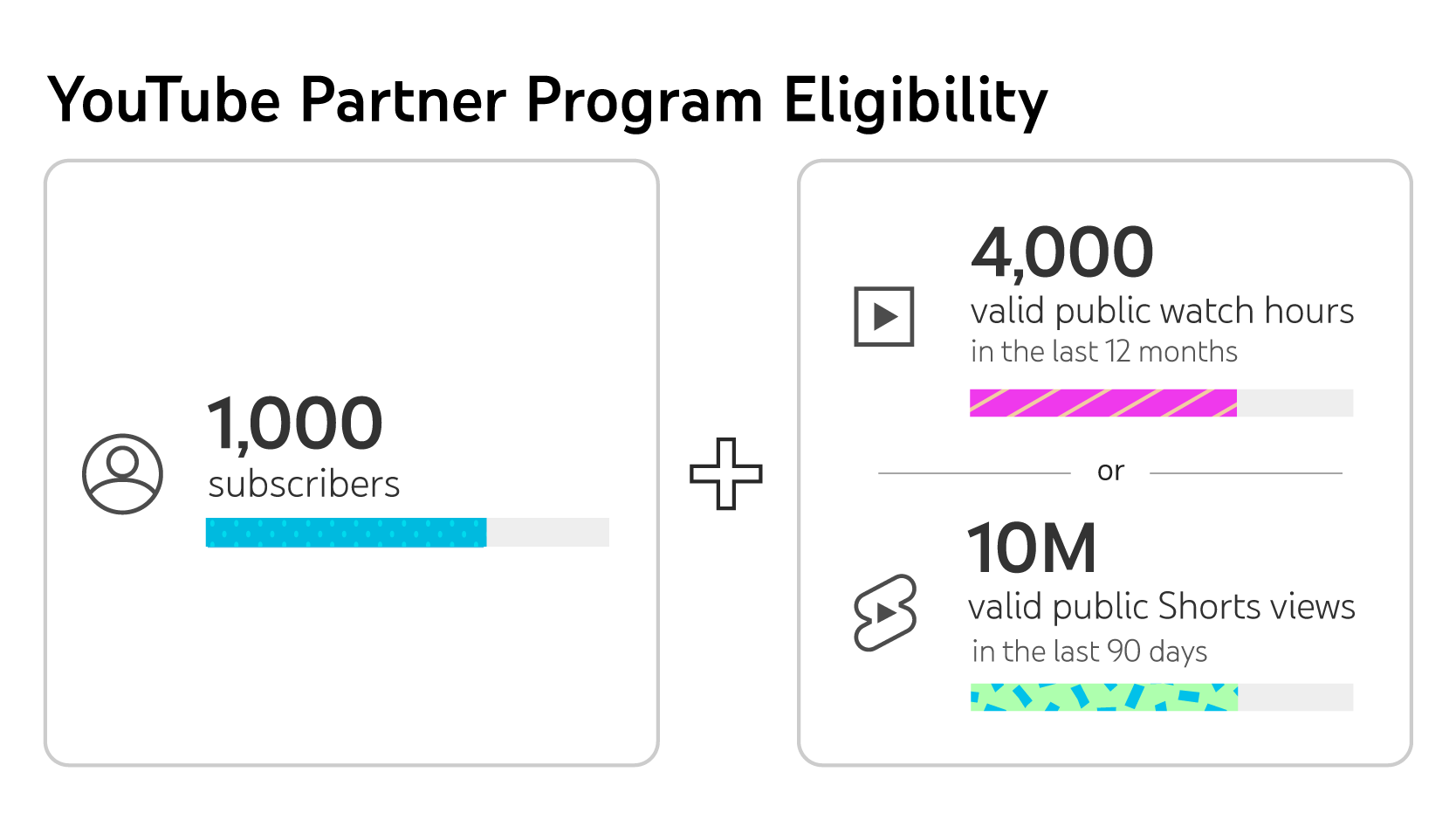
You probably know YouTube’s ads well, they usually come before or during a video. There are actually different ways YouTube uses video ads:
Pre-roll, mid-roll, post-roll: Ads that play before, during, or after a video (revenue changes depending on whether they can be skipped or not).
Display ads: Image ads that appear in or under a video.
Monetizing with YouTube ads requires a balance–adding more ads can annoy viewers and make them click away, but having fewer ads will earn you less. You need to find the ad balance that works for your content and your audience.
Despite being the standard for video monetization, earning good money from Youtube is a challenge. With the average monetization rates, you’d need 1-2 million views to make $1,000. This is why only the biggest creators really earn much from YouTube ads, but YouTube is adding other ways to monetize like paid subscriptions and merch pages.
How to monetize video on YouTube
Sign up for the AdSense program (if eligible)
Sell merch
Turn on channel memberships (if available in your area)
3. TikTok
Best for video monetization brand deals (and the creator fund)
TikTok doesn’t have the ad infrastructure that YouTube has, but it does have an algorithm that’s known for boosting growth.
TikTok formerly had a “Creator Fund”, but the program has been suspended.
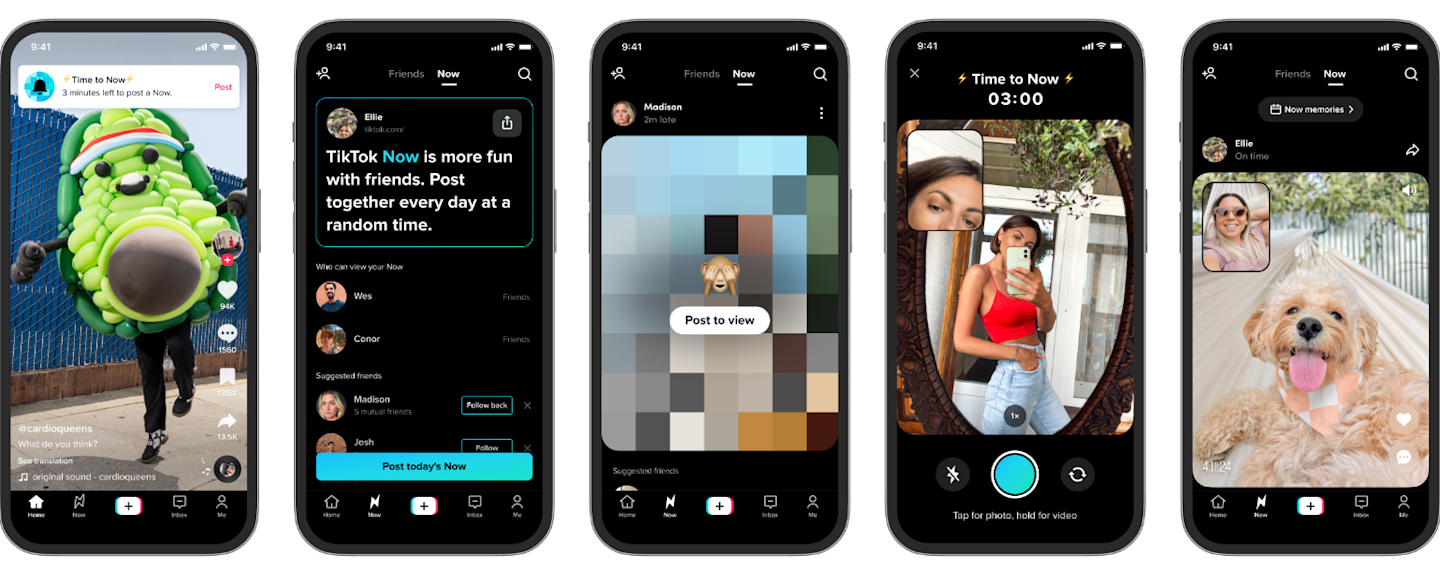
But even when it was live, the payouts were only $20-$40 per 1 million views (2-4 cents-per-mille). This is honestly one of the worst payout rates there is.
But most creators don’t go to TikTok for the creator fund. They use it to build a rapid following and take advantage of the audience growth. Once you’ve got that, you can monetize with the other options on the list above: sponsorships and partnerships, affiliates, etc. These are where most monetized TikTok creators make their money.
How to monetize video on TikTok
Find or create relevant brand deals and sponsorships
4. UScreen
Best for selling Netflix-style subscriptions
Uscreen is a video monetization platform that essentially lets you build your own Netflix. Users create a digital business with on-demand content, livestreaming, and basic community building tools. Users can also get a branded app for their video library or host on a website.

The platform allows for a video catalog with custom filters, personalized playlists, and autoplay. And streaming can happen on mobile, a computer, or a TV app. The livestream includes pay-per-view as well as a live chat.
Uscreen also boasts some basic community tools–subscribers can connect social profiles and engage in conversations with content. And with Channels, sharable content can get likes and comments, a bit like a social media platform.
Video creators can monetize with pricing tiers, or single video or course sales. Uscreen also has the option for branded apps
How to monetize video with Uscreen
Create a Netflix-style subscription site
Sell courses, livestreams, or 1-time events
5. Twitch
Best social media platform for monetizing livestreams
When it comes to monetizing livestreams on social media, Twitch is probably one of the best options out there. You can create monthly channel support fees (a bit like Patreon) with a minimum support of $4.99. Like Patreon, you can define the benefits that channel subscribers get with their support, including ad-free viewing, badges, and emotes. Interestingly, Twitch subscriptions can also be connected to Amazon Prime to give Prime members a free month.
There’s also something called “Bits”, that can be used in some channel extensions. Bits can be dropped into a chat and basically work like a tip–each bit is worth 1 cent.

Twitch also has ads, much like YouTube or Facebook. However, unlike YouTube, there’s no limit to who can run ads–creators with any sized audience can monetize this way. You can run ads during streams and you’re compensated for the viewers that see it. You can set up ads through the creator dashboard.
Finally, while it’s not built into the platform, Twitch can be a good fit for sponsorships or brand deals–if you have a viewing audience and you can find a good fit, it’s another way to earn.
How to monetize video with Twitch
Collect “bits”
Run ads
Find sponsorships
6. Substack
Best for video monetization for subscription newsletters

Substack is known as a newsletter platform, but it has the infrastructure for monetizing video well. Substack mixes a blog and content format with a social media engine for posting, wrapped with comments, chat, and some good discoverability features. Creators can also grow their audience with partnerships (recommending other newsletters to follow).
The social media side of Substack is “Notes”--short-form content sharing that works a bit like Twitter. It’s a good way to find new viewers and grow your audience.
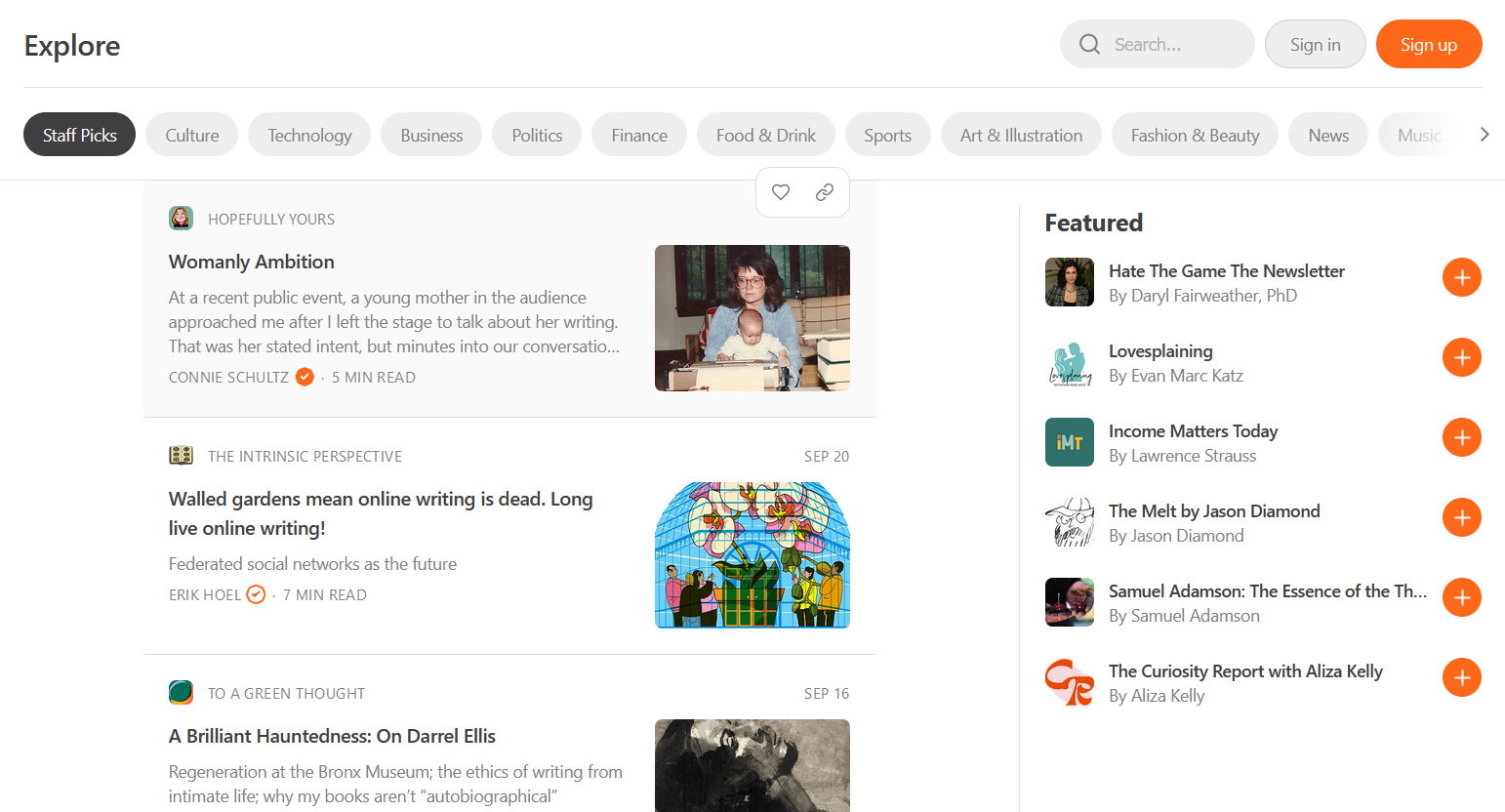
As far as monetization goes, Substack works with subscriptions. You can create paid plans with different perks for each membership tier. When you create a post, you would just select “video” as your format–when you publish, viewers can either watch your video on the Substack platform or in their inbox.
You can also add:
Free previews of paid videos.
Video clips to share in a note or social media.
Scraped audio from your video to share in a “podcast” feed.
Auto video transcripts.
Substack isn’t the best newsletter platform–particularly because it takes 10% of all your revenue as a fee. This adds up pretty quick. But it’s still one of the best for blending monetization with organic growth with video tools.
How to monetize video with Substack
Create a paid video newsletter
7. Patreon
Best video monetization platform for patrons
Patreon is a patronage platform that lets people support work they care about. In the beginning, it was strictly for voluntary support, but it’s evolved to include the option to offer premium member content.
The idea is simple. People can choose to support causes and creators they care about–and this frees up creators (ie. a video creator) to do their work. For creators, it’s easy to get set up and started on Patreon, and you can customize the type of memberships and goodies you offer your patrons.
Patreon includes a hosted creator page, ways to communicate with supporters, options for special offers, and the ability to sell merch.
The downside to Patreon is its massive fees–anywhere from 5-10% of all your earnings, and it doesn’t have tools for managing community and building relationships with supporters. You’ll also likely need to create and host your video on a different platform (e.g. YouTube).
How to monetize video with Patreon
Collect supporters for your videos
Offer different tiers and premium perks
8. Gumlet
High-end OTT video hosting without direct monetization
Gumlet is a video monetization platform that can be used for both OTT services or online learning. It also has different ecommerce applications like shoppable videos (embeddable CTAs) and presentation formats. Gumlet offers streaming and hosting, and the management of a media library.
Gumlet offers a video-first CMS with drag-and-drop uploads and automation, as well as a lot of flexibility in branding and customizing your video player. Content is protected with DRM encryption and watermarks to prevent video piracy. Gumlet also makes APIs accessible, which allows a lot of customization.
Gumlet has a free plan, and even at the higher tiers is reasonably priced. However, it’s important to note that Gumlet does not have a built-in tool for managing subscriptions or user payments. It needs to be incorporated within a larger tech-stack.
How to monetize video with Gumlet
OTT video creation to go in a tech stack
9. Vimeo
Vimeo is an alternative to YouTube that’s been around since 2004. While YouTube moved to public videos and algorithms, Vimeo has focused on embeddable video tools for other sites and owned video libraries. As such, we’re seeing Vimeo pop up a lot as a potential video monetization platform.
So Vimeo feels a bit like a YouTube you own and build subscriptions around. It has similar meta-data options and a familiar browsing interface.

There are some useful features of Vimeo.
It gives you the tools to create a website to run your subscriptions.
Collect payments in different ways in 100 currencies, including subscriptions, one-time payments, and on demand.
Collect customer information and manage emails, including email automations.
However, Vimeo’s platform fees are ridiculous–$1 per subscriber + 10% transaction fees. This means you’ll be penalized as you grow, and it bumps Vimeo to the bottom of this list.
How to monetize video with Vimeo
Build an OTT subscription service with a Vimeo library
10. Kajabi
Video monetization for asynchronous courses
Kajabi is technically an online course platform for asynchronous courses (pre-recorded). It incorporates a course content engine (including video) with a few other key features for a video business.

First, Kajabi has a landing page builder to custom build course pages. You can choose from different templates or drag and drop material. But Kajabi also has good marketing tools built into its software, so it’s possible to build marketing and sales funnels and connect them to a video course. With built-in email and a basic community function, Kajabi is a cool option for building and selling an asynchronous video course.
How to monetize video with Kajabi
Build a pre-recorded video course and market it
Success stories/case studies
Fear Club: After their travel channel show was cancelled, the creators of Project Fear took it to YouTube, while funding the show with a premium membership on Mighty Networks. The Willing Equine: Hosted by Adele Shaw, this community teaches holistic horse training, and monetized video is a big part of the offer.
Teach Music Online: Carly Walton created a community to teach the teachers–training music teachers to build sustainable businesses online.
The Saxophone Academy: Wally Wallace–with a doctorate in saxophone–hosts video lessons for would-be saxophonists.
Marie Forleo: Brought all her video courses--including her flagship “B-School” course–to Mighty Pro.
Modern Metal Academy: Created by John Browne, MMA hosts video guitar lessons for a community of 5,000 members.
Conclusion
We hope this article has given you a solid understanding of how video monetization works and some of the platforms you can use for it. Remember, there are lots of other content creator platforms for monetizing with affiliates or sponsorships.
And if you want to monetize video with an engaged community on your own community platform, come build with us. From livestreams to paid courses to events to memberships, we’ve got you covered.
FAQs
1. How do I monetize my video content?
We covered this in the article. But here's the tldr;
Monetizing video means somebody needs to pay you to create videos. This is one of three possibilities:
Advertisers will pay to get in front of the audience you have created.
Your audience will pay for premium subscription, access, digital products, etc.
Patrons may put up money in order to see your work continue.
There are variations on these, but a common theme. Either your viewers will pay to watch or advertisers will pay to reach your viewers (sometimes the platform).
2. Which platform pays the most for videos?
Creators earn the most when they create memberships and digital products around their videos. It's as simple as that.
The platform that pays the most is the one that lets you create a cultivated membership of the people who care about your videos and want more… more access, more knowledge, more conversations.
On Mighty, our average membership fee is $47 a month. That should give you an idea of how much you can earn.
What size community would you need to fund your vision?
Which video monetization model earns more for a small creator?
Honestly, it's usually a model that has a viewer paying for something: a membership, a digital product, a course, etc.
This is because alternatives, specifically advertising, just don't pay the same. Advertisers pay pennies on the dollar to get in front of your viewers. But viewers will often pay good money to spend more time with you.
One alternative can be affiliates, if you have a natural fit for your audience. For example, if you teach people how to build websites, partnering with one of the top website companies might make sense.
But for most creators, selling direct to viewers is going to make the most sense.
4. How does having a community impact the success of video monetization?
Communities often scale the impact of your videos. For example, even on YouTube, getting viewers chatting in the comments is a great sign. It means people like your ideas and want to engage, ask questions, or give input.
But YouTube is limited for building real communities. Instead, when you harness the power of member interaction in a community platform, you often earn more. That's because people don't just pay to watch a video. They pay for the conversations and friendships that your videos spark. That's why community platforms are the best option for many video creators.
5. What percentage of revenue does the platform take as commission?
It depends on the platform. YouTube famously has a 45/55 revenue split. Patreon takes 10% of your revenue. This penalizes you as you grow–you pay them more.
Most dedicated community or course platforms simply charge a flat rate. For example, Mighty Networks starts from $49 a month. (You can see full pricing here.)
6. What monetization options are available (ads, subscriptions, pay-per-view, donations, merchandise)?
We talked about some of the key ways to monetize above. But here is a quick summary of the most popular.
Ads: Advertisers pay you a small amount to advertise products to your viewers.
Subscriptions: Viewers pay a regular fee to access content.
Pay-per-view: Viewers pay per piece of content.
Memberships: viewers join communities to watch content, but also for conversation and engagement with other members.
Courses: Creators teach a subject related to their videos.
Events: Members show up for live or virtual experiences.
Affiliates: Creators partner with a brand and earn a commission when they make a sale.
Influencer: Creators are paid by a brand to make posts or content.
7. How do video monetization platforms pay out?
Every platform has its own payout model. Here are some of the most common ones:
Mighty Networks: Payments made through Stripe payout within 48 hours or weekly. Payments through Apple pay trail a month (Apple’s policy).
YouTube: Pays out monthly for ads and memberships from the previous month (if threshold has been met).
UScreen: Pays out in 1 - 2 months depending on the streaming platform.
Twitch: Pays out monthly if you’ve reached the threshold.
Substack: Pays out through Stripe (within 48 hours).
Patreon: Pays out monthly.
Gumlet: Pays out weekly.
Vimeo: Pays out monthly.
Kajabi: Pays out in 1 - 2 business days.
8. Can I set my own pricing for premium content?
This works best if you choose a video monetization platform that you control. Some form of membership, course, or subscription software give you this option.
However, YouTube does let you create memberships, and you can set member-only videos as a perk. This sort of acts like setting your own pricing.
9. Which platforms are best for getting discovered and growing a following?
Apart from Shorts, the YouTube algorithm works powerfully based on viewer psychology. If you can create captivating thumbnails and titles that attract clicks, you can build a following.
TikTok, IGTV, and YouTube shorts all work on scrolling. The primary metric for growth is getting viewers to stay on your video and watch. The platform will then push your videos to more people.
Patreon and Substack have searchability and discoverable features for people who are looking for new content or creators to support.
A dedicated membership platform like a Mighty Network doesn't have “discoverability” like a social media network, but great communities grow through word of mouth.
10. How much content do I need to create to earn money from my videos?
With a dedicated membership platform, a video every week or so can be more than enough. When you create community and conversation around each video, you don't get stuck on the content treadmill.
11. What kind of video engagement tools do I need for my platform?
Here are some of the top engagement tools that can move your audience from viewers to engaged members.
Content libraries: Can members discover the content and convos they care about?
In-video controls: Can members control their videos, speeds, dubbing, transcripts, etc.
Member-generated content: Can they create their own content: videos, articles, etc.?
Polls & questions: Can members engage and respond?
Community forums: Can members jump into conversations, react, and comment?
Gamification: Can you offer members challenges, unlocks, secret content, and leaderboards?
Member profiles: Can members make friends, meet like-minded people, and start conversations?
Apps: Can members join in from their phone and get notified about content and livestreams?
Ready to start building your community?
Start a free 14-day trial to explore Mighty—no credit card required.
More like this
Join Mighty Community
Learn the principles of Community Design™ (and see them in action) alongside thousands of creators and entrepreneurs. It's free to join!

Online Courses
Creating a Course
Teaching a Course
Course Platforms
Selling a Course
Communities & Memberships
Community Platforms
Managing a Community
Building a Community
Growing a Community
Monetizing a Community
Content Creation
Creators & Entrepreneurs
Monetization
Content Creation
Starting a Business
Website Builders
Creating & Managing a Website
Events
Event Platforms
Hosting & Marketing Events
Branded Apps
Creating a Mobile App
Coaching Apps
Community Apps
Coaching
Mastermind Groups
Starting a Coaching Business
Coaching Platforms
Filter by Category
Online Courses
Communities & Memberships
Creators & Entrepreneurs
Events
Branded Apps
Coaching
Build a $1 Million Community
This free masterclass went viral—sign up to learn why.


